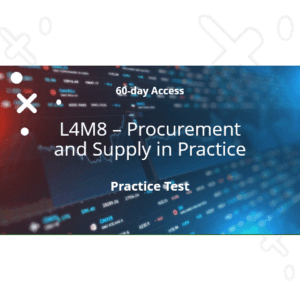Cost modelling: A procurement master skill
Quick question: What is the difference between cost modelling and cost analysis? I guess some of you would say they are similar. But in fact, there is a clear boundary between them. In this post, I will tell you what a real cost model looks like.

Cost modelling is often an overlooked procurement skill since it is really hard to master. However, when a robust cost model are successfully developed, it can support strategic and tactical activities in procurement such as planning, negotiation, making decision on make versus buy, one whether a technical design should be lowered.
What is cost modelling?
When a person says the word ‘model’, he/she may imply a prototype of a new product, or a simple simulation of how a system works. The word ‘model’ in cost modelling points to the latter meaning. By making a cost model, an organisation not only finds the structure of supplier’s costs and price, but also builds a simulator that identifies how their decision will affect the price to be paid.
There are many variables that have impacts on the costs and prices of suppliers. A good cost model should address and accommodate those variables. It should describe the relationship between the input variables and the output price. If a variable changes by x%, how will the price be?
For example, you are a senior buyer working in a manufacturer based in South Africa. Your company is sourcing the component A from Australia. With the assistance from finance, you break down their price into elements such as materials, labour, overhead and markup. Now you are preparing a negotiation with the supplier with a target to reduce 10% of component price. How will you persuade the supplier? Reducing their markup may backfire since it will damage the relationship. Reducing costs looks more reasonable, but it comes with price, i.e. cutting labour costs will require the supplier to invest more in automation which eventually translates into increased overheads.
With a cost model, costs and benefits of an option will be clearer. How would investment in automation affect supplier’s costs? How would a new design will affect the price?
Principles for making robust cost model
As I mention above, cost models should be able to support ‘What If’ analysis. What would happen if the product is sourced from low-cost countries instead of developed countries? To ensure the accuracy and robustness of a cost model, Julie A. Ask and Timothy M. Laseter suggests the following principles:
- Capture cost drivers, not just cost elements. While cost analysis mainly focuses on breaking down the price into cost elements, cost modelling should take drivers into account. Cost elements are what construct a price, such as materials, labour, overhead. Cost drivers are the factors that increase or decrease cost elements. The most common cost driver is economies of scale: when the quantity of a product reaches some level, the costs to produce that product are minimal. There are also other drivers, such as learning curve (the more experience you have, the more efficient you are), technology, geographic region (which affects the minimum wage that the supplier must pay their employees), labour productivity, etc.
- Build commodity-specific models to highlight key drivers. Each product requires different levels of investment, process complexity, labour skills,… An organisation should develop cost models that focus on specific products, instead of analysing the costs of a specific supplier. Once the cost model for a product is developed, you can easily explain why a certain supplier sets out that price, and you will have your own reference before going to a negotiation.
- Consider the impact of total cost of ownership. As you may learn throughout the CIPS qualifications, procurement should never solely focus on purchase price. Total cost of ownership will look at other factors such as delivery price, upkeeping costs, implications of disposal.
- Start simple and add complexity only as needed. Making cost model is not simple. Initially, the team who is responsible for cost modelling may lack the necessary information, which leads to making the model based on assumption rather than on empirical data. Furthermore, some products like semiconductors or jet engines are extremely complex. Making an accurate cost model in the first attempt is merely impossible. However, the team can improve itself continuously.
- Triangulate around data to improve accuracy and confidence. Cost modelling should not only rely on a single data source. The principle title suggests that the team should collect the data from at least 3 sources so that the result is as accurate as possible.
Reference:
- Ask, J. A. and Laseter, T. M. (1998), “Cost modelling: A foundation purchasing skill”, Strategy and Business, Issue 10, pp. 10-20
